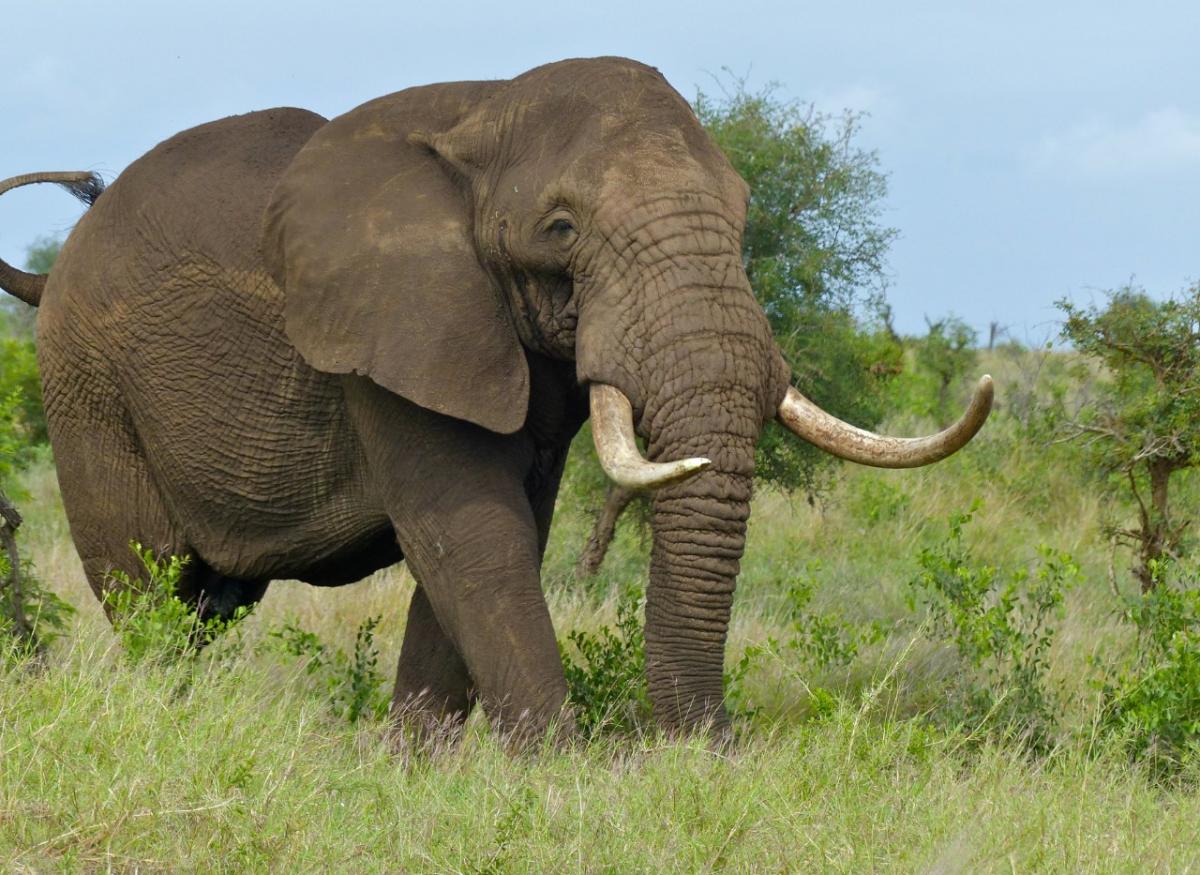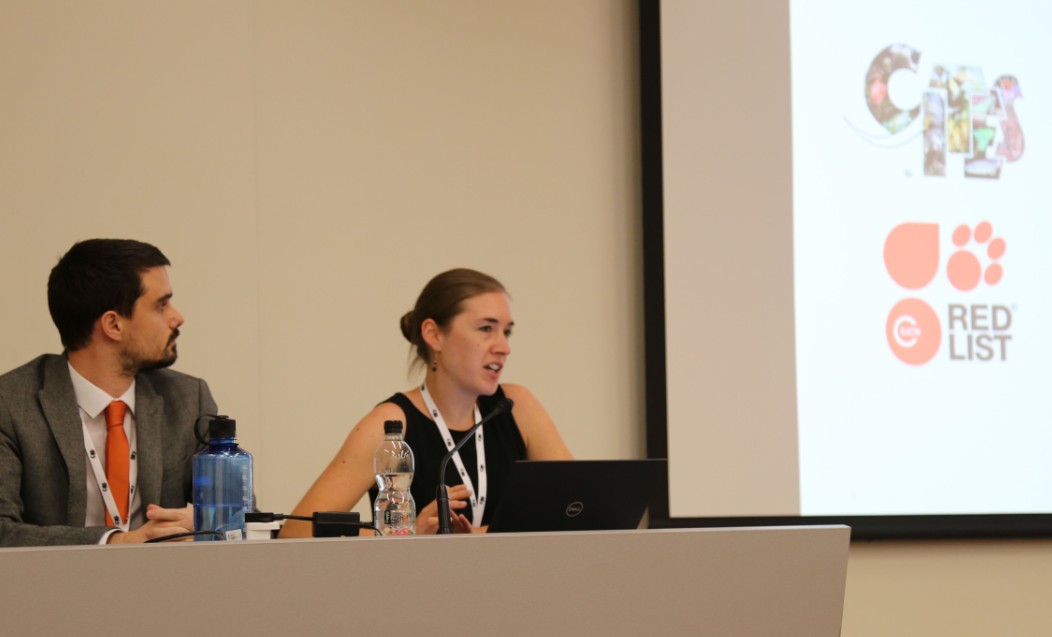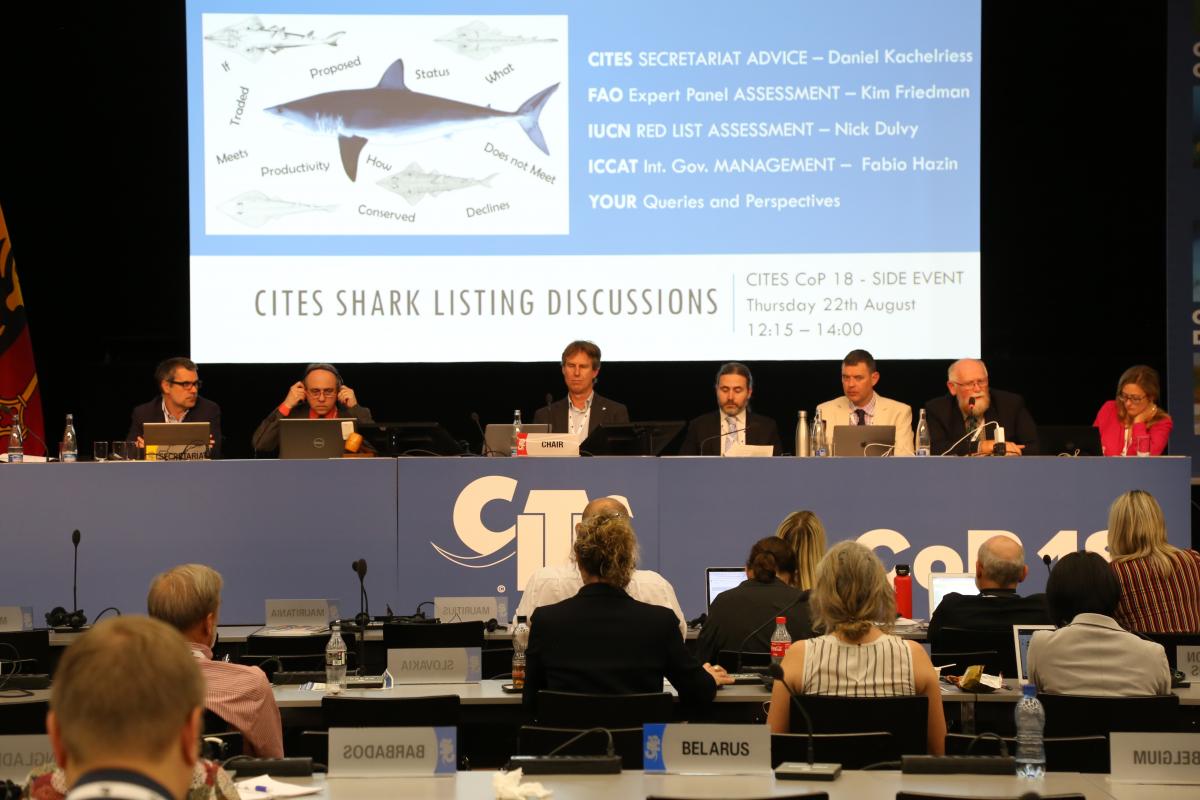IUCN Informs Key Decisions at the CITES Conference on Wildlife Trade
At the recently concluded 18th meeting of the Convention on International Trade in Endangered Species (CITES) Conference of the Parties (CoP18), IUCN expertise supported key decisions towards ensuring sustainable and legal trade in wildlife, writes Patricia Cremona, IUCN’s Sustainable Use and Trade Officer, from Geneva.
As the Convention expands to cover a growing number of species, countries agreed to give increased attention to previously overlooked groups such as amphibians, songbirds, ornamental fish and medicinal plants. Nonetheless, issues around iconic African mammals continued to dominate the discussions. Participants’ views on the most effective conservation approaches for these species, in particular elephants and rhinos, remain divided.
Some of the key decisions made during the meeting concern the listing of species in Appendices I and II of the Convention. Appendix I lists species that are most highly threatened by international trade, and therefore trade in these species is severely restricted. Appendix II lists species for which international trade risks becoming a threat unless properly regulated. The expertise of the IUCN Species Survival Commission (SSC) played a significant role in informing debates on these listings, through the IUCN/TRAFFIC Analyses of the Proposals to Amend the CITES Appendices.
The species added to Appendix II as a result of this meeting include the giraffe; Reeves’ pheasant; Chinese and Vietnamese species of leopard geckos; the Tokay gecko; Grandidier's Madagascar ground gecko; spiny-tailed iguanas; the spider-tailed horned viper; spiny newts, Asian warty newts and crocodile newts; mako sharks, guitarfish, wedgefish and teatfish; ornamental spiders; African padauk; and the Mulanje and Neotropical cedars.
Meanwhile, the species added to Appendix I include small-clawed and smooth-coated otters; the black crowned crane; garden, horned and pygmy lizards; Grenadines clawed gecko; two box turtles and the Annam leaf turtle; the star and pancake tortoises; and two swallowtail butterflies.
Critical conservation issues affecting certain highly threatened species received particular attention. Participants urged immediate action to protect the last of the vaquita porpoise, which is caught as bycatch in illegal totoaba fisheries. The meeting also took decisions to address the illegal trade in pangolins, which remain among the world’s most highly trafficked species.
The meeting also shed light on some positive developments. Thanks to effective management of the American crocodile in Mexico and vicuña in Argentina, these populations moved from Appendix I to Appendix II. Four Australian mammals and one bird species also transferred from Appendix I to Appendix II, as there is no evidence that trade is currently threatening these species.
Despite the significant division in opinion on conservation strategies for elephants and rhinos, countries agreed a number of recommendations to address illegal trade in ivory and rhino horn. An IUCN/TRAFFIC report on the conservation status of rhinos helped to inform the decisions. A proposal to list the extinct woolly mammoth in Appendix II, to address potential laundering of elephant ivory as mammoth ivory, was considered but ultimately rejected.
There was considerable attention on aquatic species during the meeting. SSC experts on eels and seahorses advised on recommended actions to ensure sustainable trade in these species. The meeting also recommended further work to explore whether additional species should be listed in CITES, in particular ornamental fish and amphibians. This reflects a welcome trend of increasing attention on marine and freshwater conservation issues, which will be key themes of the upcoming IUCN World Conservation Congress in June 2020.
The meeting also included significant debate on the engagement of indigenous peoples and local communities in CITES decision-making, and the impact of CITES decisions on livelihoods. This reflects an increasing recognition that the sustainable use of species has a critical role to play in achieving broader conservation objectives, and CITES will continue to engage in the elaboration of the Convention on Biological Diversity’s post-2020 Strategic Plan. IUCN strongly supports closer cooperation among the biodiversity-related conventions, and welcomes the decision by CITES to collaborate more closely with the World Heritage Convention, for which IUCN acts as an advisory body.
The challenge now is to implement the new decisions adopted by CITES effectively, to ensure positive outcomes for the species concerned and the livelihoods of the people who depend on them. IUCN stands ready to assist in these efforts by continuing to compile and communicate scientific expertise on species and conservation.
The role of the International Union for Conservation of Nature (IUCN) as an intergovernmental observer organisation to CITES is to provide technical expertise on species and conservation. As scientific information on the biology and conservation status of species is fundamental to CITES’ objective of ensuring that international trade in wild animals and plants does not threaten their survival, the IUCN Species Survival Commission (SSC) plays a key role in CITES decision-making. In Geneva, the IUCN SSC was represented by 17 of its Specialist Groups, providing a wealth of expertise on African and Asian elephants, African rhinos, South American camelids, primates, cats, otters, pangolins, vultures, crocodiles, snakes, tortoises and freshwater turtles, sharks, seahorses, eels and orchids, as well as the sustainable use of wild species and wildlife health.



